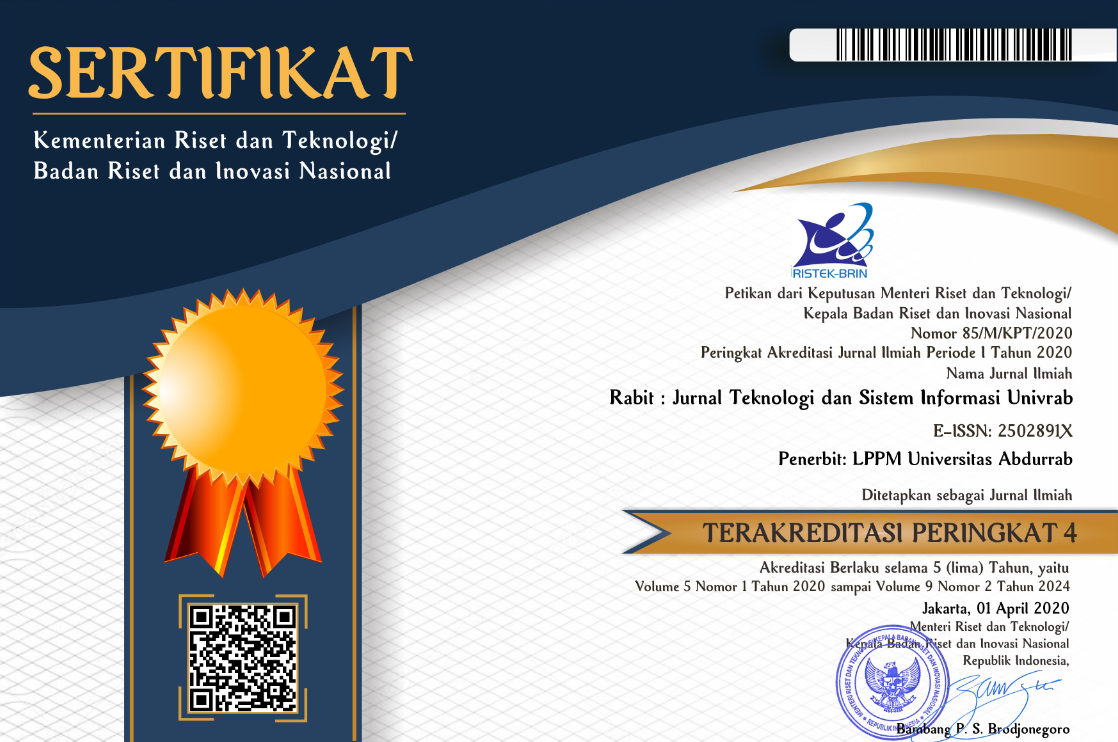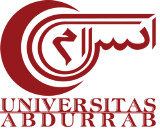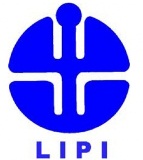PEMANFAATAN DESAIN INTERAKSI ANTAR MUKA PENGGUNA DENGAN IMPLEMENTASI MODEL GOMS PADA APLIKASI MOBILE ELMA
Abstract
The design of interaction and user interfaces is an element of a digital or computer-based information system. The development of user interface designs can attract users to feel comfortable in conducting online consulting activities. The purpose of this study is to find out the user's needs as a whole in the design of user interactions on the Elma mobile application with the GOMS model. The performance of the GOMS model is a systematic interrelated method that is interrelated with goals, and actions from the operator using the last method and process, namely selection that can reflect the purpose of the user interface design analysis in the application. Applying the GOMS method to the user interface design, it can be said that the application development must pay attention to the user's needs thoroughly, and the ease of user access by the application of the analysis using the "8 Golden Rules Interface" user interface design process. These rules make it easier for researchers as a whole to accommodate user needs, as well as share information on the display of the Ema application. The purpose of this study is to analyze the utilization of the Elma application interface design to increase user comfort in using the Elma application. The results of this study indicate that making an application must pay attention to the overall needs of the user, ease of access for users according to the application of analysis using the "8 Golden Rules Interface" user interface design process.
References
N. R. D. M. S. M. J. a. A. K. Annti Oulasvirta, Combinatorial Optimization of Graphical User Interface Designs, Finlanf, 2020.
C. X. Li Xiang, The Research on Performance of Automobile Human-machine Interface Based on BHR-GOMS Behavior Model, China: IEEE, 2010.
A. Hadiana, Study of Application Interface based on User's Perception Using Kansei Approach, Bandung: IEEE, 2018.
H. H. A. K. Umi Rosyidah, Usability Evaluation Using GOMS Model for Education Game "Play and Learn English", Semarang: IEEE, 2019.
M. K. B. K. P. R. M. P. H. M. Andreas Holzinger, Personas for Artificial Intelligence (AI) an Open Source Toolbox, Canada: IEEE, 2022.
S. H. J. H. K. Hyeji jang, User Perspectives on Blockchain Technology User-Centered Evaluation and Design Strategy for DApps, South Korea: IEEE, 2020.
A. B. S. B. P. J. Bruno Massoni Sguerra, Adapting Human-Computer Interfaces to Working Memory Limitations Using MATCHS, France: IEEE, 2018.
A. K. A. T. V. G. Vitaly Kampaniets, GOMS-TLM and Eye Tracking Methods Comparison in the User Interface Interaction Speed Assessing Task, Taganrog, Russia: IEEE, 2020.
X. Q. T. S. S. H. M. Z. W. Y. K. K. T. W. K. T. S. Keping Yu, Design and Performance Evaluation of an AI-Based W-Band Suspicious Object Detection System for Moving Persons in the IoT Paradigm, Japan: IEEE, 2020.
U. K. Naladtaporn Aottiwerch, Design Computer-Assisted Learning in an Online Augmented Reality Environment Based on Shneiderman's Eight Golden Rules, Thailand: IEEE , 2017.

This work is licensed under a Creative Commons Attribution-NonCommercial-ShareAlike 4.0 International License.
Copyright Notice
The copyright of the received article shall be assigned to the publisher of the journal. The intended copyright includes the right to publish the article in various forms (including reprints). The journal maintains the publishing rights to published articles. Therefore, the author must submit a statement of the Copyright Transfer Agreement.*)
This work is licensed under a Creative Commons Attribution-NonCommercial-ShareAlike 4.0 International License.
In line with the license, authors and any users (readers and other researchers) are allowed to share and adapt the material only for non-commercial purposes. In addition, the material must be given appropriate credit, provided with a link to the license, and indicated if changes were made. If authors remix, transform or build upon the material, authors must distribute their contributions under the same license as the original.
Please find the rights and licenses in RABIT : Jurnal Teknologi dan Sistem Informasi Univrab. By submitting the article/manuscript of the article, the author(s) accept this policy.
1. License
The non-commercial use of the article will be governed by the Creative Commons Attribution license as currently displayed on Creative Commons Attribution-NonCommercial-ShareAlike 4.0 International License.
2. Author’s Warranties
The author warrants that the article is original, written by stated author(s), has not been published before, contains no unlawful statements, does not infringe the rights of others, is subject to copyright that is vested exclusively in the author and free of any third party rights, and that any necessary written permissions to quote from other sources have been obtained by the author(s).
3. User Rights
RABIT's spirit is to disseminate articles published are as free as possible. Under the Creative Commons license, RABIT permits users to copy, distribute, display, and perform the work for non-commercial purposes only. Users will also need to attribute authors and RABIT on distributing works in the journal.
4. Rights of Authors
Authors retain all their rights to the published works, such as (but not limited to) the following rights;
- Copyright and other proprietary rights relating to the article, such as patent rights,
- The right to use the substance of the article in own future works, including lectures and books,
- The right to reproduce the article for own purposes,
- The right to self-archive the article,
- The right to enter into separate, additional contractual arrangements for the non-exclusive distribution of the article's published version (e.g., post it to an institutional repository or publish it in a book), with an acknowledgment of its initial publication in this journal (RABIT : Jurnal Teknologi dan Sistem Informasi Univrab).
5. Co-Authorship
If the article was jointly prepared by other authors, any authors submitting the manuscript warrants that he/she has been authorized by all co-authors to be agreed on this copyright and license notice (agreement) on their behalf, and agrees to inform his/her co-authors of the terms of this policy. RABIT will not be held liable for anything that may arise due to the author(s) internal dispute. RABIT will only communicate with the corresponding author.
6. Royalties
This agreement entitles the author to no royalties or other fees. To such extent as legally permissible, the author waives his or her right to collect royalties relative to the article in respect of any use of the article by RABIT.
7. Miscellaneous
RABIT will publish the article (or have it published) in the journal if the article’s editorial process is successfully completed. RABIT's editors may modify the article to a style of punctuation, spelling, capitalization, referencing and usage that deems appropriate. The author acknowledges that the article may be published so that it will be publicly accessible and such access will be free of charge for the readers as mentioned in point 3.
 PDF (Bahasa Indonesia)
PDF (Bahasa Indonesia)
 Abstract views: 842
Abstract views: 842
 downloads: 875
downloads: 875

 :
:












